Lesson 1 1850-1874 The Nebraska Kansas-Act
Within Lesson 2 are a variety of activities and materials that can be used with students of various grade levels. All of these items are tied to the NET Nebraska Studies Timeline materials which are shown and linked throughout the lesson. Teachers are not intended to use all of the contents within this lesson but to pick which activities or materials they would prefer to use with their students. Most of the materials are shown within the lesson and/or have external links to the content or other content which may be helpful to the lesson's activities or materials.
You can also directly access all of this lesson at the NET Nebraska Studies website: http://nebraskastudies.org/
Created for NET by Michael Young, former History Department Chair, Omaha Burke High School
1850 - 1874 The Kansas - Nebraska Act
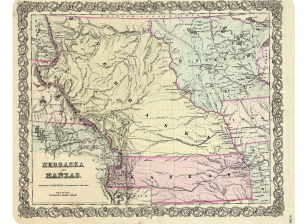
Kansas/Nebraska map
Kansas NE map
CONTENTS OF THIS LESSON
1. MAP ANALYSIS - Nebraska Maps Grade Levels 4, 8 & 12
2. DISCUSSION - Impact of the Kansas-Nebraska Act on Native Americans Grade Levels 8 & 12
3. PHOTO ANALYSIS - Stephen A. Douglas Grade Level 8
4. MAP ANALYSIS - Nebraska Geographic Formation Grade Level 12
5. Resources: National Archives: Map Analysis Worksheet, Excerpts from Stephen A. Douglas Speeches, Photograph Analysis Worksheet, Written Document Analysis Worksheet, READING: Jim McKee - When southern Nebraska tried to secede and join Kansas
6. Nebraska Department of Education Content Area Standards
1. Nebraska Maps Grade Levels 4, 8 & 12
Reading & Discussion
Have students review various maps of Nebraska in the 1850-1874 sections of Nebraska Studies as well as in the American Memory Collection. They should complete the Map Analysis Worksheet in the Resources section at the end of this document while reviewing the maps and video.
Maps shown below
Link to accompanying video: http://nebraskastudies.org/1850-1874/the-kansas-nebraska-act/
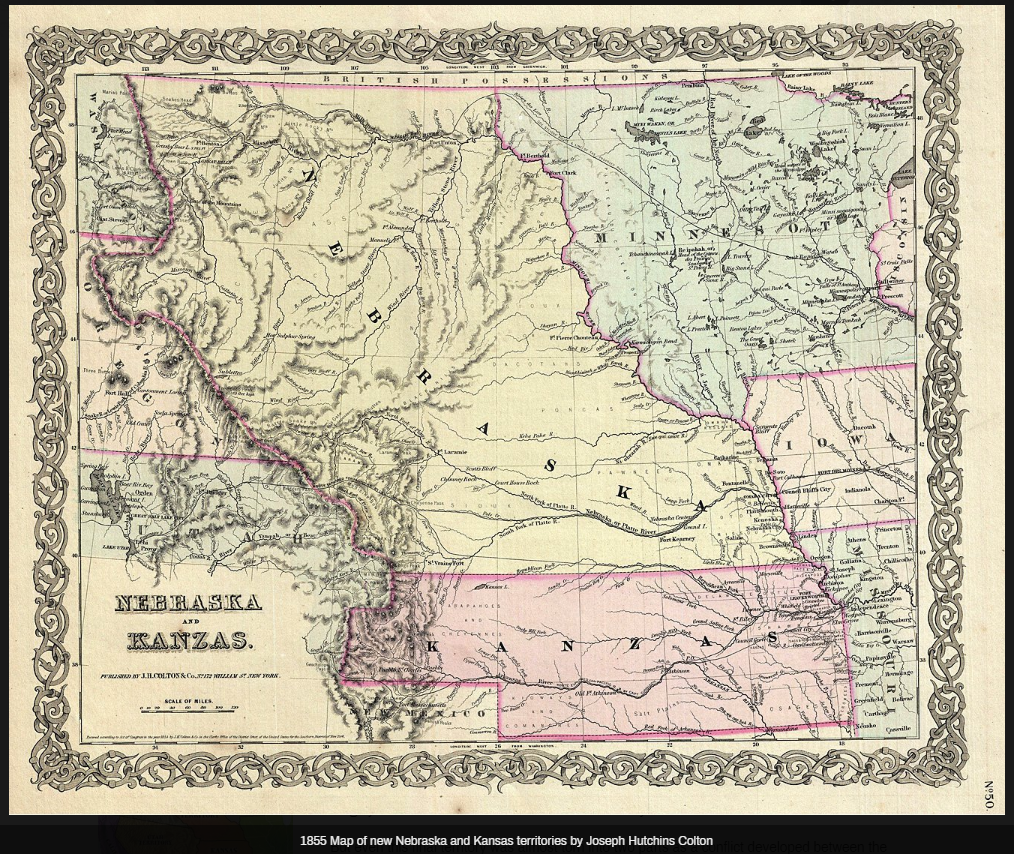
Nebraska Map
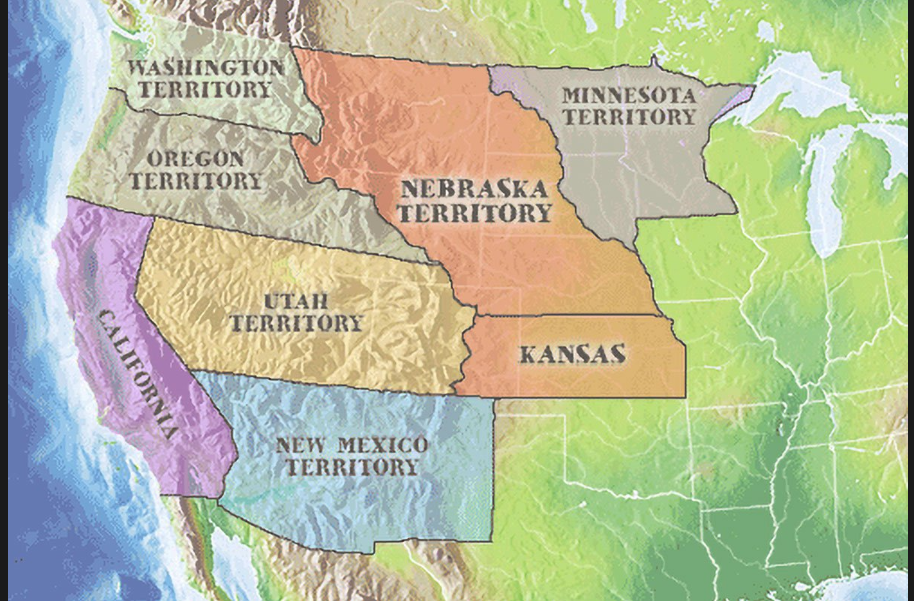
Western US Map
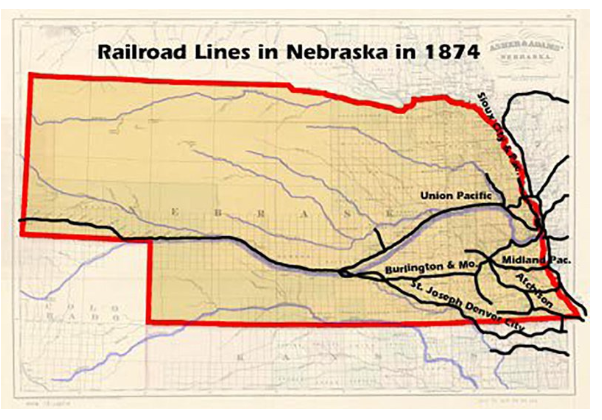
Nebraska Map 1874
Additional Railroad Maps (if needed) can be found at this link: Railroad Maps. 1828-1900 Library of Congress. American Memory Collection. http://memory.loc.gov/ammem/gmdhtml/rrhtml/rrhome.html
After students have completed Map Analysis Worksheet in the Resources section at the end of this document, they can also answer these questions for discussion
Why do you think the shape and size of Nebraska changed from the 1828 map to the 1863 map?
For more advanced students:
1. What states owe at least part of their present- day area to what was in the Nebraska Territory?
2. What physical and geometric boundaries made up the borders for the original Nebraska Territory?
3. What is an advantage of using physical boundaries such as rivers or mountains?
4. What is an advantage of using geometric boundaries such as a line of latitude?
5. What would be some advantages for the state of Nebraska if it had retained all of the original shape and land area of the 1854 Nebraska Territory?
6. What would be some disadvantages for the state of Nebraska if it had retained all of the original shape and land area of the 1854 Nebraska Territory?
Nebraska Department of Education Content Area Standards
Social Studies: SS 4.3.1; SS 4.3.2; SS 4.3.5; SS 4.4.2 | SS 8.4.2(US) | SS 12.1.1; SS 12.3.1; SS 12.3.4; SS 12.4.4(US); SS 12.4.5(US); SS 12.4.5(WLD)
2. Impact of the Kansas-Nebraska Act on Native Americans Grade Level 8 &12
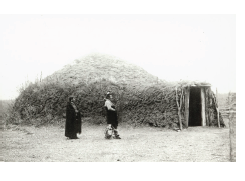
L1Sod_House.PNGSod House
Sod House
Activity - Discussion
Have students read the section in the 1850-1874 timeline of Nebraska Studies on the Kansas-Nebraska Act. Then, use the following questions to spark discussion. There is an accompanying video which is linked in 1. Nebraska Maps lesson above for students to also view.
- Did Native Americans live in Nebraska during this time period?
- How were their lives influenced by the Kansas-Nebraska Act?
For more advanced students
1. How did the Missouri Compromise and the Kansas-Nebraska Acts affect the settlement of the Nebraska area?
2. What was a prominent issue in each act?
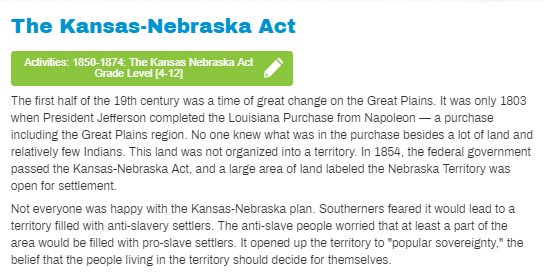
Page 1
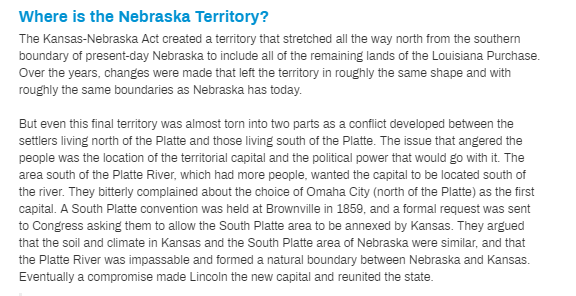
Page 2
Nebraska Department of Education Content Area Standards
Social Studies: SS 8.4.2(US); SS 8.4.3(US) | SS 12.1.1; SS 12.3.1; SS 12.4.1(US); SS 12.4.5(US)
3 Stephen A. Douglas Grade Level 8
Activity: Photo Analysis
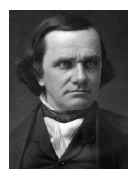
Stephen A. Douglas
Have students use the National Archives Photograph Analysis Worksheet in the Resources section at the end of this document to analyze a photo of Stephen A. Douglas. You can also find the photo for Stephen A. Douglas in the Resources Section at the end of this lesson plan.
Who was he? How did he influence the settlement of Nebraska?
For More Advanced Students Questions for the Primary Document: excerpts from Stephen A. Douglas Speeches
Background: These speeches were made four years after Congress passed the Kansas Nebraska Act, which was authored by Douglas. In the debates with Lincoln, Douglas was defending the Act.
1. According to Douglas (in the first debate), what was the best aspect of the Kansas Nebraska Act in relationship to the slave question.
2. Also, in the first debate, what groups of politicians were the only ones who opposed the Kansas Nebraska Act according to Douglas?
3. Does Douglas view those who want to end slavery as heroes or villains? Explain your answer.
4. In the seventh debate, what is Douglas’s argument against Lincoln’s claim that the country cannot continue to be divided half slave and half free?
5. Why does Douglas think it best for the states to make most of their own laws instead of the national government making the rules?
6. Based on what Douglas said in these speeches, what would his response be to the argument that slavery should be ended because it is wrong for humans to be owned by others? Explain your answer.
Resources: https://en.wikipedia.org/wiki/Stephen_A._Douglas
The Nebraska Question, by Stephen A. Douglas, et al
http://books.google.com/books?id=h1k0wnCgDI0C&printsec=titlepage&dq=stephen+a+douglas+nebraska
Excerpts from Stephen A. Douglas Speeches (Resources section below)
Nebraska Department of Education Content Area Standards
Social Studies: SS 8.4.2 (US)
4 Nebraska’s Geographic Formation Grade Level 12
Activity Map Analysis
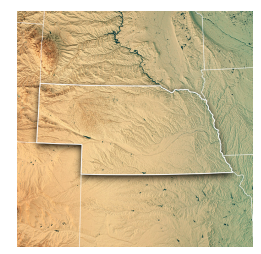
NE Map
Use a topographical map of Nebraska to help students discuss the following questions:
- What arguments related to geography were used by people living in the South Platte region to justify their joining the state of Kansas in the 1850s
- Thinking about geography and the unhappiness of those on the south side of the Platte in the 1850’s, what are some arguments the residents of western Nebraska might use to plead for leaving Nebraska and joining Wyoming
Students may also use the Map Analysis Worksheet in the Resources section at the end of this document.
Resources:
Jim McKee- When southern Nebraska tried to secede and join Kansas (Resources section below)
Nebraska Department of Education Content Area Standards
Social Studies: SS 12.1.1; SS 12.3.1; SS 12.4.1(US); SS 12.4.5(US)
1850-1874 The Nebraska Kansas-Act
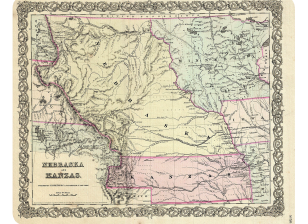
Map
Nebraska Department of Education Academic Standards https://www.education.ne.gov/contentareastandards/ Nebraska Department of Education Social Studies and History Standards https://tinyurl.com/ycuxo8sh National Archives http://www.archives.gov/index.html Library of Congress Learning Page Lesson Plans http://memory.loc.gov/ammem/ndlpedu/lessons/index.html Six Trait Writing: Ideas, Organization, Voice, Sentence Fluency, Word Choice, and Conventions. http://www.edina.k12.mn.us/concord/teacherlinks/sixtraits/sixtraits.html
page 6
5 Resources
National Map Analysis Archives Worksheet
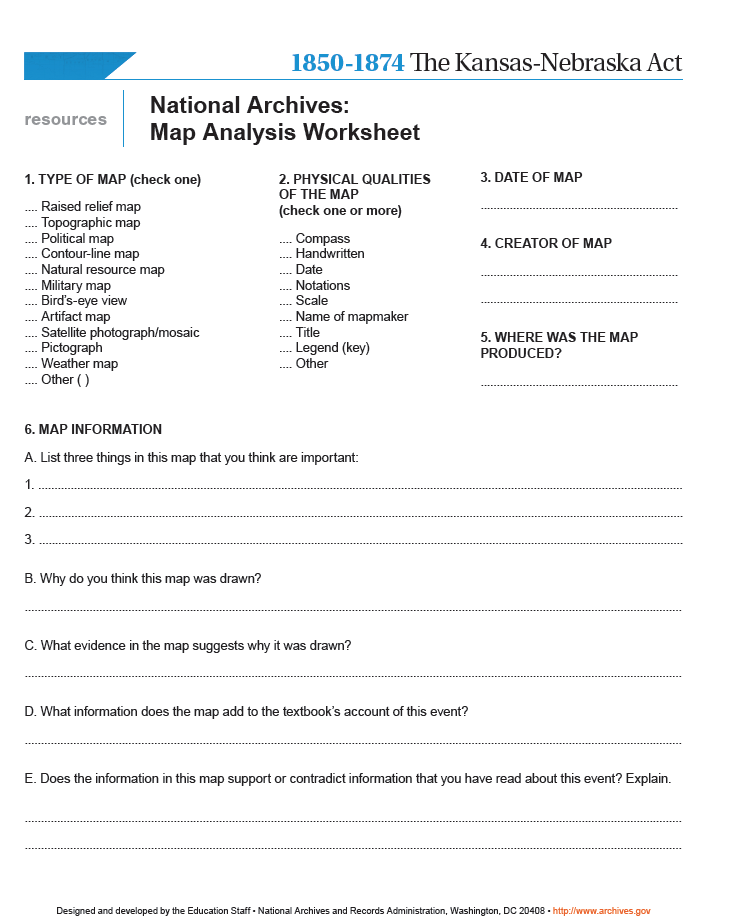
Map analysis Worksheet
Stephen A. Douglas Speeches
8th-12th grade
Primary Documents
Stephen A Douglas Speeches
Excerpt from the Lincoln-Douglas Debates, Debate One:
During the session of Congress of 1853-’54, I introduced into the Senate of the United States a bill to organize the Territories of Kansas and Nebraska on that principle which had been adopted in the compromise measures of 1850......., I put forth the true intent and meaning of the act in these words: “It is the true intent and meaning of this act not to legislate slavery into any State or Territory, or to exclude it therefrom, but to leave the people thereof perfectly free to form and regulate their domestic institutions in their own way, subject only to the federal constitution.” Thus, you see, that up to 1854, when the Kansas and Nebraska bill was brought into Congress for the purpose of carrying out the principles which both parties had up to that time ........every Whig and every Democrat in the House voted in the affirmative, and only four men voted against it, and those four were old line Abolitionists. (Cheers.)
Excerpt from the Lincoln-Douglas Debates, Debate Seven:
I took up Mr. Lincoln’s three propositions in my several speeches, analyzed them, and pointed out what I believed to be the radical errors contained in them. First, in regard to his doctrine that this Government was in violation of the law of God, which says that a house divided against itself cannot stand, I repudiated it as a slander upon the immortal framers of our Constitution. I then said, I have often repeated, and now again assert, that in my opinion our Government can endure forever, (good) divided into free and slave States as our fathers made it,—each State having the right to prohibit, abolish or sustain slavery, just as it pleases. (“Good,” “right,” and cheers.) This Government was made upon the great basis of the sovereignty of the States, the right of each State to regulate its own domestic institutions to suit itself, and that right was conferred with the understanding and expectation that inasmuch as each locality had separate interests, each locality must have different and distinct local and domestic institutions, corresponding to its wants and interests. Our fathers knew when they made the Government, that the laws and institutions which were well adapted to the green mountains of Vermont, were unsuited to the rice plantations of South Carolina. They knew then, as well as we know now, that the laws and institutions which would be well adapted to the beautiful prairies of Illinois would not be suited to the mining regions of California.
Questions for the Primary Documents
Background: These speeches were made four years after the Kansas Nebraska Act, which was authored by Douglas, was passed by Congress. In the debates with Lincoln, Douglas was defending the Act.
1. According to Douglas (in the first debate), what was the best aspect of the Kansas Nebraska Act in relationship to the slave question?
2. Also, in the first debate, what group of politicians were to only ones who opposed the Kansas Nebraska Act according to Douglas?
3. Does Douglas view those who want to end slavery as heroes or villains? Explain your answer.
4. In the seventh debate, what is Douglas’s argument against Lincoln’s claim that the country cannot continue to be divided half slave and half free?
5. Why does Douglas think it best for the states to make most of their own laws instead of the national government making the rules?
6. Based on what Douglas said in these speeches, what would his response be to the argument that slavery should be ended because it is wrong for humans to be owned by others? Explain your answer.
Picture of Stephen A. Douglas
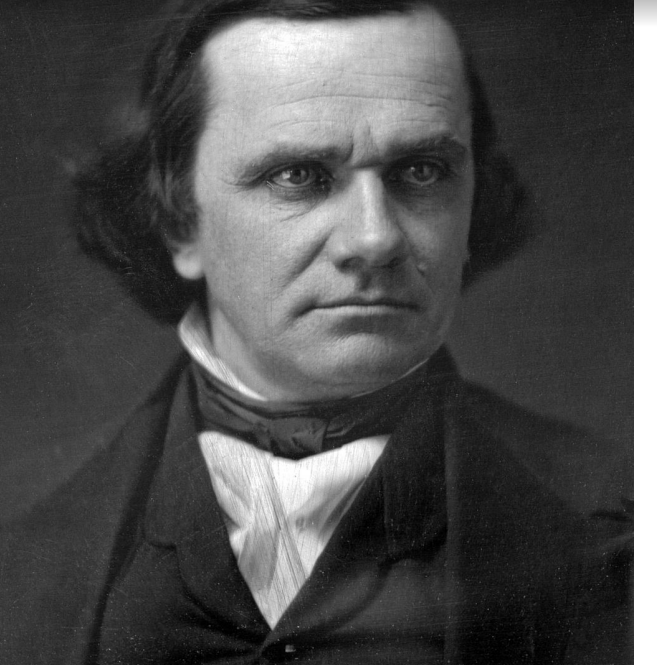
Stephen
National Archives: Photograph Analysis Worksheet
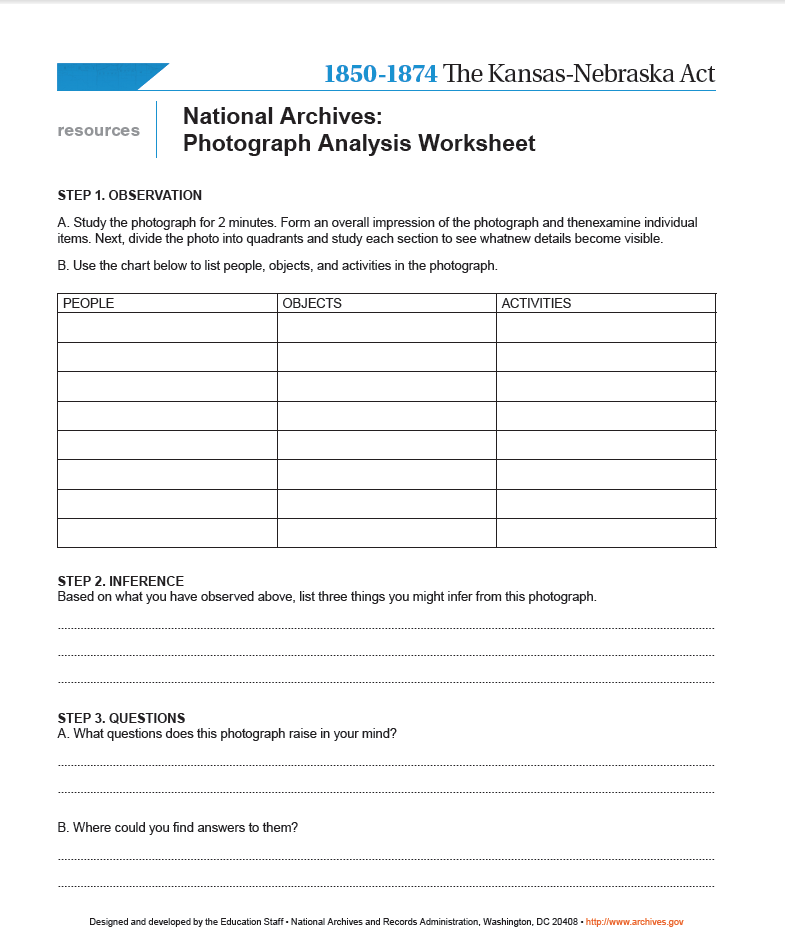
Photographic Analysis Worksheet
National Archives: Written Document Analysis Worksheet
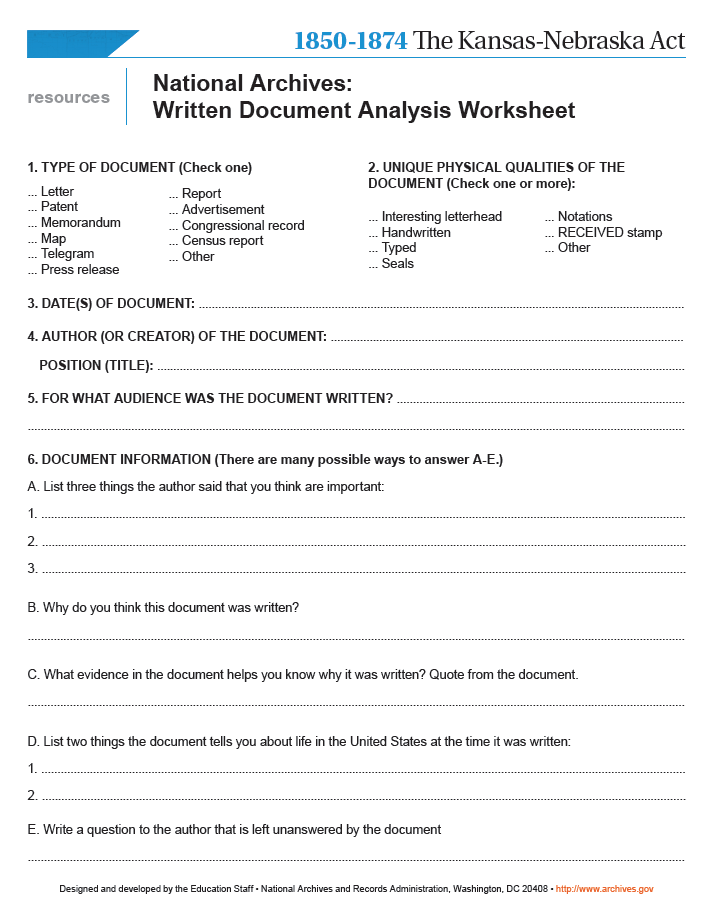
Written Document Analysis Worksheet
Jim McKee Article: When southern Nebraska tried to secede and join Kansas
In 1856, J. Sterling Morton argued that the move would be in the best interests of Nebraska, Kansas and the United States.
Lincoln Journal Star, April 18, 2009
This map of Nebraska in 1856 shows the area south of the Platte River whose residents decided to attempt to withdraw from Nebraska and merge with Kansas as that state approached statehood. (Courtesy photo)
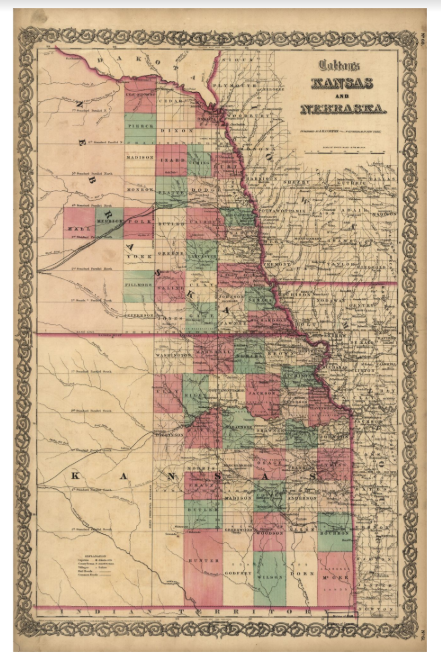
Map
In 1855, one year after the Nebraska Territory was formed, Nebraska City was the largest settlement in the territory, the "leader of the South Platte Section and chief rival of Omaha" even though the capital had been placed in Omaha by Gov. Cuming.
Although the population living south of the Platte River was double that of the north, the governor has manipulated legislative boundaries so that Omaha and the north commanded a majority in the Legislature.
On Jan. 17, 1856, J. Sterling Morton introduced a bill in the Nebraska Legislature's lower house that would ask the U.S. Congress to reconsider the territorial description using the Platte River as the northern boundary of Kansas, effectively letting the South Platte area secede from Nebraska and be annexed to Kansas.
Morton argued that the move would be in the best interests of Nebraska, Kansas and the United States. He pointed out that having the Platte River in the middle of Nebraska was impractical because it would never be possible to easily bridge and thus was a natural boundary. Additionally, by annexing the South Platte to Kansas, the politics of that territory would be altered so that it would "guarantee (the) freedom of Kansas" in the question of slavery.
The house did not agree with Morton, and the bill was tabled on a vote of 20 to 5.
But the division of Nebraska north and south of the Platte had become so fierce by 1857 that the southern faction became fixated on removal of the capital from Omaha to a point south of the river. The 1858 rump legislature at Florence accelerated the division when the press pointed out that up to that point every federal dollar given to Nebraska had benefited only the north.
The Nebraska City News referred to the Platte River boundary as "the hateful tie that binds us to the north country."
A subsequent bill which would have taken parts of Otoe and Cass counties to form the new Strickland County brought the south versus the north to the boiling point.
In 1859, at what was called the Brownville Convention, Morton, as leader of the secessionist movement, told the gathering that annexation is the South Platte's "only hope-our salvation."
An open meeting on the question at Nebraska City brought a resolution to approach the U.S. Congress and ask them to use their discretion to change the northern Kansas boundary using the "impassable" boundary of the Platte. Kansas would then become "one of the most important states in the great west.
Meantime, a bill to annex southern Nebraska was floated in the Kansas House of Representatives but did not make it out of committee.
On July 12, 1859, the 12 "honorary delegates," including Jacob Dawson of Lancaster County, were given the floor to argue their case in Kansas. Although 13 pages of testimony were given, two powerful reasons were used against them. First, it was felt the annexed area was apt to be Democratic, and, second, the increase in area would push the center of the new state north, working against Topeka and Lawrence, which were both hoping to become the Kansas state capital. The ultimate vote was thus quite powerfully against annexation.
With statehood in 1867, the South Platte faction was finally vindicated as the capital was placed at Lancaster and renamed Lincoln. Even Morton noted that it was ultimately best for Nebraska not to have been divided and partially wed to Kansas.
Secession was not totally forgotten, however, and in the 1890s the Nebraska panhandle counties threatened to annex themselves to Wyoming, where irrigation laws were more favorable
Historian Jim McKee, who still writes with a fountain pen, invites comments or questions. Write to him in care of the Journal Star or at jim@leebooksellers.com.
Appendix
Nebraska Department of Education Content Area Standards
- Social Studies Standards 4
SS 4.2.1 Students will recognize prices are what consumers pay when they buy a good or service.
SS 4.2.3 Students will make observations about the purpose of various financial institutions in Nebraska.
SS 4.3.1 Students will explore where (spatial) and why people, places and environments are organized in the state.
SS 4.3.2 Students will compare the characteristics of places and regions and their impact on human decisions.
SS 4.3.4 Students will compare and contrast the characteristics of culture statewide.
SS 4.3.5 Students will identify how humans have adapted to and modified different environments in Nebraska. SS 4.3.6 Students will use geographic skills to make connections to issues and events.
SS 4.4.2 Students will describe and explain the relationships among people, events, ideas, and symbols over time using multiple types of sources.
SS 4.4.3 Students will describe and explain multiple perspectives of historical events.
SS 4.4.4 Students will analyze past and current events, issues, and problems.
SS 4.4.5 Students will develop historical research skills. SS 4.3.5 Students will identify how humans have adapted to and modified different environments in Nebraska.
- Social Studies Standards 8
SS 12.2.12 Students will evaluate how international trade benefits individuals,
SS 8.1.1 Students will summarize the foundation, structure, and function of the United States government.
SS 8.1.2 Students will describe the roles, responsibilities, and rights as local, state, national, and international citizens and participate in civic service.
SS 8.2.1 Students will explain the interdependence of producers and consumers in a market economy.
SS 8.2.5 Students will identify the basic economic systems in the global economy.organizations, and nations.
SS 12.3.2 Students will examine how regions form and change over time.
SS 12.3.1 Students will analyze where (spatial) and why people, places, and environments are organized on the Earth’s surface.
SS 12.3.4 Students will analyze and interpret patterns of culture around the world.
SS 12.3.6 Students will analyze issues and/or events using the geographic knowledge and skills to make informed decisions.
SS 8.4.2 (US) Students will analyze the impact of people, events, ideas, and symbols upon US history using multiple types of sources.
SS 8.4.3 (US) Students will analyze. and interpret historical and current events from multiple perspectives.
SS 8.4.4 (US) Students will identify events, ideas, and symbols upon US causes of past and current events,history using multiple types of sources. issues, and problems.
SS 8.4.5 Students will develop and evaluate the effects of past, historical research skills current, and potential future events, issues, and problems
- Social Studies Standards 12
SS 12.4.1 (US) Students will analyze how major past and current US events are chronologically connected, and evaluate their impact(s) upon one
SS 12.4.2 (US) Students will analyze and evaluate the impact of people, events, ideas, and symbols upon US causes of past and current events, history using multiple types of sources. issues, and problems.
SS 12.4.4 (US) Students will identify and evaluate the effects of past,current and potential future events, issues and problems.
SS 12.4.5 (US) Students will develop historical research skills.
SS 12.1.1 Students will analyze and evaluate the foundation, structures, and functions of the United States government as well as local, state, and international governments.
SS 12.2.1 Students will assess how market forces guide the owners of land, labor, and capital and determine the allocation of wealth in the economy.
SS 12.1.2 Students will address local, state, national or international issues and policies through meaningful civic participation.
SS 12.2.10 Students will analyze the roles and responsibilities of government in various economic systems.
